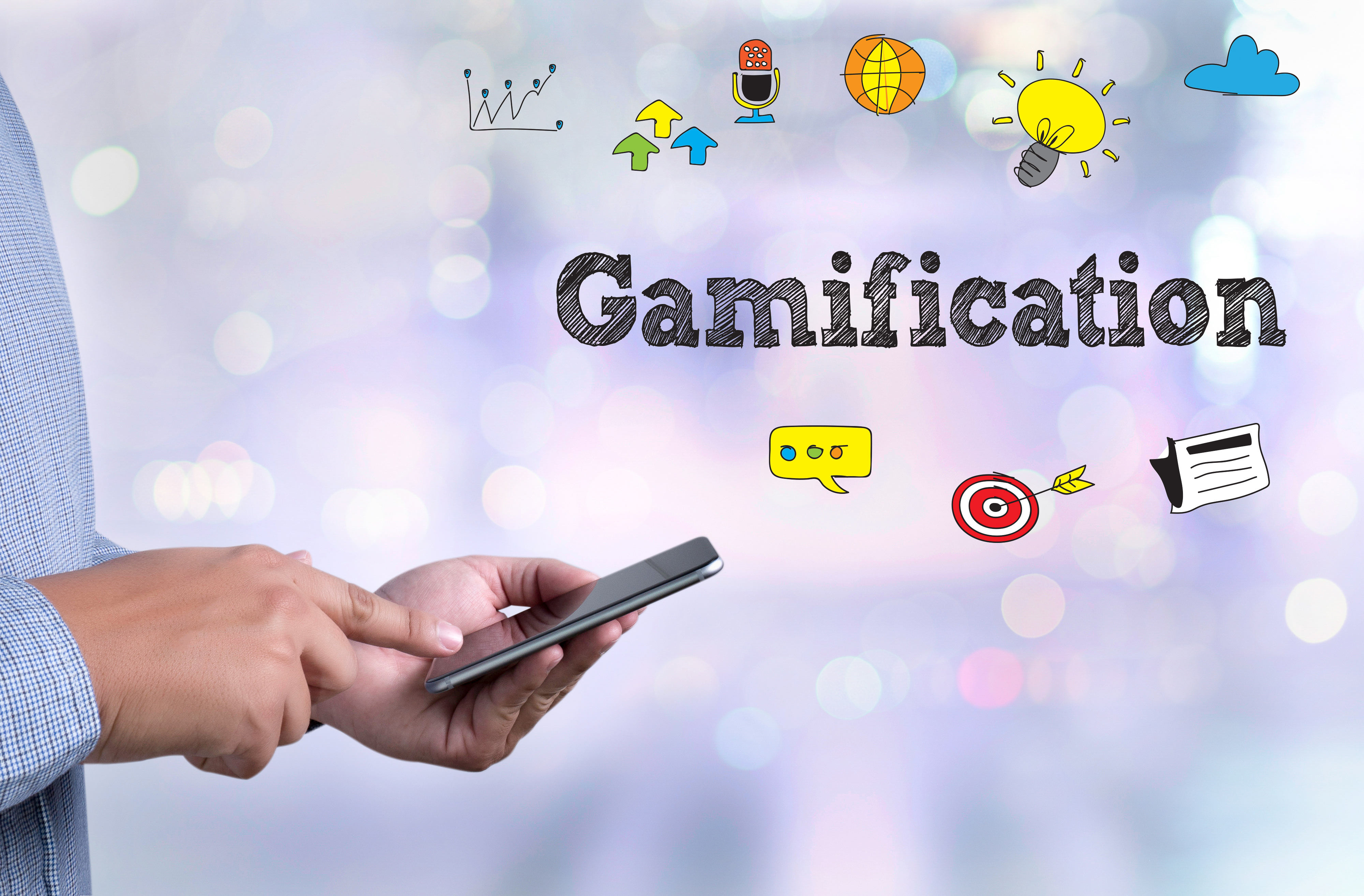Gartner defines gamification as “the use of game mechanics and experience design to digitally engage and motivate people to achieve their goals.”
If the term seems like old news, we're here to tell you that it's only the beginning.
In 2017, the global gamification reached $3.3 billion according to MarketReaserch.biz. That number is forecasted to grow at a compound annual rate of 36.2% through 2026. This includes both consumer-facing gamification aimed at customer acquisition, as well as internal gamification aimed at motivating a workforce. Creating a gaming environment to lure customers may make sense immediately. The benefits of gamifying your enterprise for your staff may be less obvious – but those benefits should not be overlooked. Gamification in business isn’t all about turning work into play. It’s about empowering your workforce to reach new levels of production and obtain real results that align with the objectives set forth by your organization.
But in some circles, a stigma has developed around this term “gamification.” It’s been labeled as a gimmick aimed at disguising work as a fun competition or baiting a generation of videogamers to show up to the office. That stigma misses the point entirely.
“In a gamified workspace, goals and objectives are made crystal clear”
What’s the problem?
There is a gaping information hole between employers and employees.
Organizations set goals for the company, and those goals get lost or diluted by the time they are relayed to the workforce. Employees wind up setting personal goals they think are appropriate, but risk misaligning themselves with the enterprise as a whole. If a restaurant server wants to make big tips he pushes big ticket items, but if a chef needs to get rid of a lot of salmon, she runs a salmon special. When the chef communicates her objective to her staff and offers a reward to the server who sells the most fish, everyone’s goals become aligned. It’s the same in an enterprise. When the objectives are laid out for everyone to see, and an appropriate incentive is offered, suddenly you have a staff unified around achieving a common goal.
Achieving this means changing how communication flows. Organizations who operate under the yearly performance review need to update their practice. Setting goals and offering feedback should happen frequently to keep staff and the organization moving in the same direction. And, don't forget to dish out encouragement along the way.
Staff should be recognized for their achievements, but that doesn’t always happen. It can take months or years for the results of a person’s hard work to be evident to their boss. But when that progress is updated in real time with a visual that is easy for the boss to see, that person’s achievement is noticed earlier. This may result in a bonus, a promotion or just a pat on the back, but it’s a powerful thing when employees know their bosses see what they are doing.
The importance of staff engagement and collaboration among colleagues is frequently overlooked. When one employee discovers a process or tactic that works, there isn’t always a clear path to sharing that information. On a gamified platform, everyone sees when someone is getting great results. Then conversations can be had and information shared to help other people rise to the occasion and start seeing similar outcomes.
How does gamification fix it?
In a gamified workspace, goals and objectives are made crystal clear, and the steps to achieve them are laid out plainly. Employee goals become aligned with the organization’s goals and executives get a bird’s eye view of who in their team is succeeding and who is struggling. Colleagues can challenge one another and push each other to the next level. Hard work does not go unnoticed, and deserving people are rewarded for their achievements.
When problems arise, it’s evident to everyone and can be addressed immediately. For instance, if team members continually fail to meet a certain milestone, bosses can work on revising the organization’s strategy or adjust the goal. Or if a certain training segment regularly returns low quiz scores, it’s a sign employee education and training materials need to be revisited. Problems that are squashed quickly save everyone time and frustration.
Colleagues that operate in silos rarely learn from one another. A standout salesperson may be recognized by his boss, but when a colleague sees his progress in a game platform it pushes that colleague to be better. This kind of visibility can spur conversations among co-workers about which strategies are working and which strategies need refining. Pretty soon, there is a company standard that everyone is striving to achieve.
How do you gamify?
Implementing the right platform is critical to the success of your gamified environment. The platform needs to augment other tools that your workforce is already using. It needs to be mobile device friendly, beautifully designed, and easy to use and update in real time. With a rise in BYOD (bring your own device) in the workplace as well as remote staff, the need for a web-based program is crucial. No one wants to have to take extra time to open a separate application or fidget with entering data to update their scores. This is supposed to be a solution for improving productivity, not hindering it.
Choosing the right incentives is also crucial. For some companies, virtual badges or stars may be all you need. For others, worthwhile physical prizes may be in order. Regardless of the incentive, your workforce needs to see that their colleagues and their bosses are noticing the progress they are making. Reaching milestones, achieving sales, closing deals, even completing training modules can all be tracked and rewarded.
What does it look like in practice?
Gamification is being used as a tactic to combat serious real-world problems faced by enterprises every day. Some enterprises are using a gamification platform for training employees effectively on best cybersecurity practices, resulting in fewer breaches. Others are using gamification to spur sales teams to reach numbers like never before.
But this is just scratching the surface of what gamification could do for your enterprise. With the right tools and incentives, an organization can use gamification to fuel innovation, improve sales results, discover the best way to train employees and much more. The potential is limitless.
Are you searching for a gamification platform? You've come to the right place. Check out Bigtincan Zunos!


